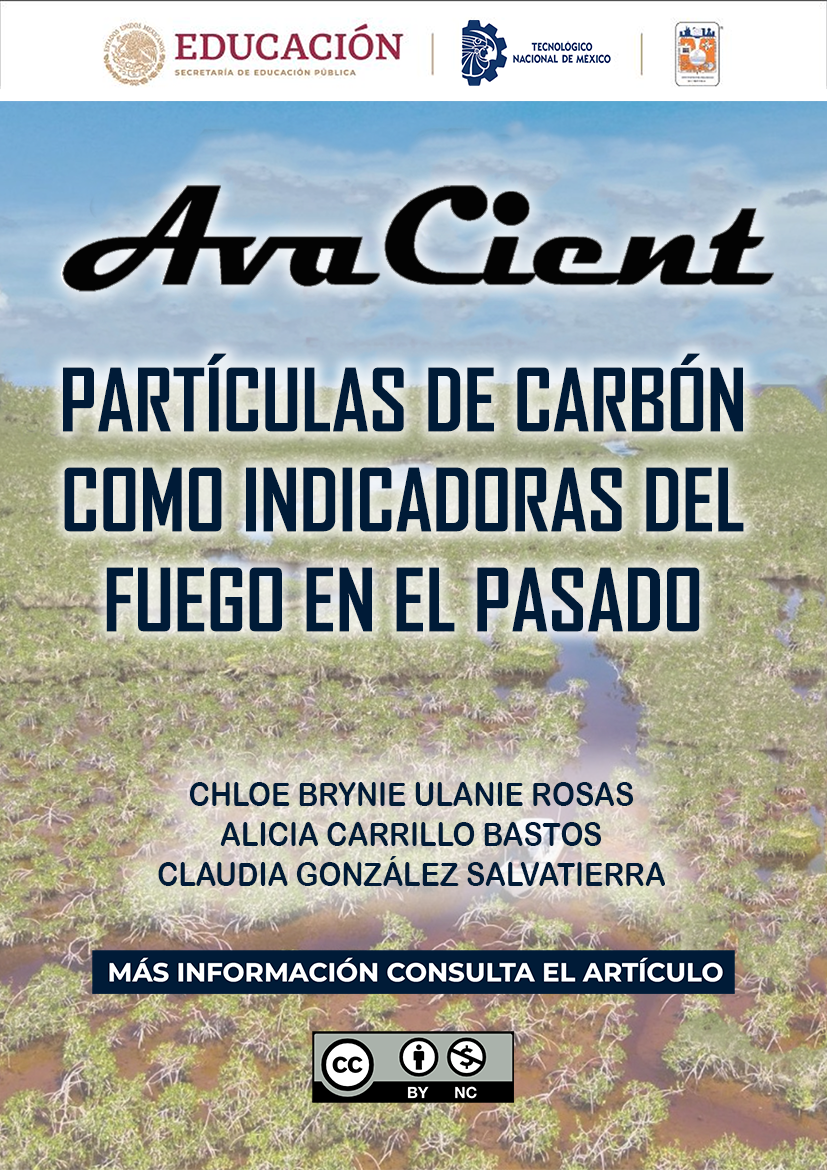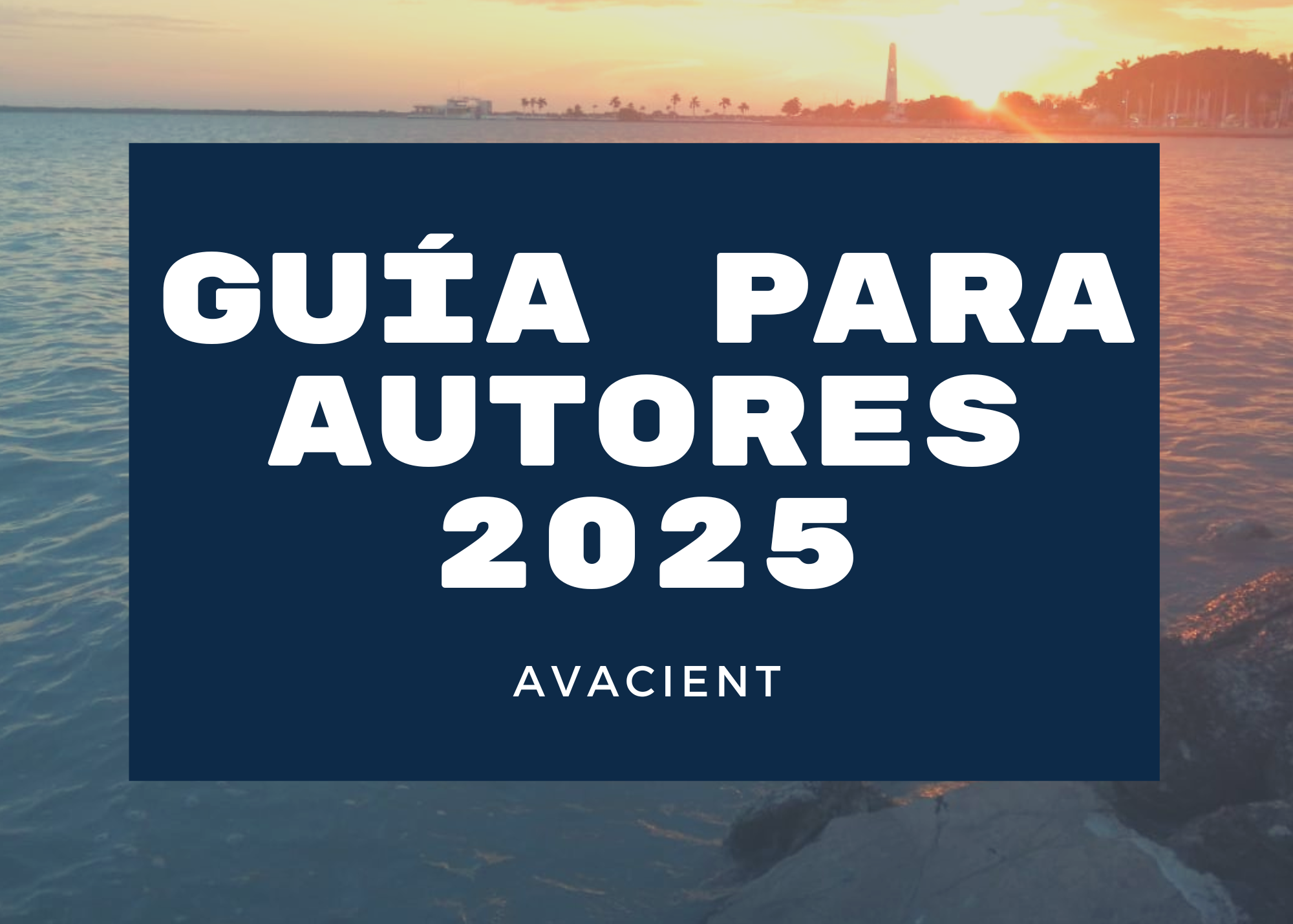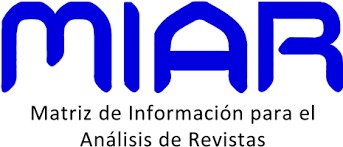PARTÍCULAS DE CARBÓN COMO INDICADORAS DEL FUEGO EN EL PASADO
DOI:
https://doi.org/10.69823/avacient.v4n2a20Palabras clave:
fuego, ecosistemas, vegetación, macrocarbones, microcarbones.Resumen
El fuego es una de las principales formas de disturbio que influye en la composición, estructura y distribución de la vegetación. Así mismo, un incendio tiene afectaciones a múltiples niveles de organización biológica, influyendo en las poblaciones, comunidades y ecosistemas. En los últimos años se ha hecho un esfuerzo significativo para entender la dinámica de los incendios en el pasado e identificar los factores clave que juegan un papel importante en un evento de incendio. Durante un incendio se producen partículas de carbón; estas partículas contienen información anatómica de las especies, así como atributos químicos y físicos representativos del ambiente al momento de su depositación. Se han desarrollado técnicas y metodologías para entender el comportamiento del fuego en el pasado para ayudar a establecer mejores prácticas de manejo del fuego en la actualidad. El presente artículo discute sobre los incendios y las partículas de carbón como el principal proxy para entender la historia de los incendios en escalas de tiempo amplias. Adicionalmente, se presentan ejemplos de estudios particularmente para las Américas y el Caribe donde se ha utilizado el análisis de partículas de carbón para reconstruir la historia de los incendios en el pasado.
Descargas
Citas
Aragón-Moreno Alejandro A. Islebe GA, Torrescano-Valle N. (2012). A ~ 3800-yr, high-resolution record of vegetation and climate change on the north coast of the Yucatan Peninsula. Review of Palaeobotany and Palynology. 178:35–42. doi: 10.1016/j.revpalbo.2012.04.002.
Anchukaitis Kevin J., Sally P. Horn, (2005). A 2000-year reconstruction of forest disturbance from southern Pacific Costa Rica, Palaeogeography, Palaeoclimatology, Palaeoecology, 221(1-2), 35-54, https://doi.org/10.1016/j.palaeo.2005.02.003.
Avnery, S., Dull, R. A., & Keitt, T. H. (2011). Human versus climatic influences on late-Holocene fire regimes in southwestern Nicaragua. The Holocene, 21(4), 699-706. https://doi.org/10.1177/0959683610391314
Blarquez Olivier, Julie Talbot, Jordan Paillard, Lyna Lapointe-Elmrabti, Nicolas Pelletier, Christian Gates St-Pierre. (2018). Late Holocene influence of societies on the fire regime in southern Québec temperate forests, Quaternary Science Reviews, 180, 63-74. https://doi.org/10.1016/j.quascirev.2017.11.022.
Conedera, M., Tinner, W., Neff, C., Meurer, M., Dickens, A. F., & Krebs, P. (2009). Reconstructing past fire regimes: methods, applications, and relevance to fire management and conservation. Quaternary Science Reviews, 28(5-6), 555–576. doi:10.1016/j.quascirev.2008.11.005
Dull Robert A. (2004). An 8000-year record of vegetation, climate, and human disturbance from the Sierra de Apaneca, El Salvador. , 61(2), 159–167. doi:10.1016/j.yqres.2004.01.002
Dull, Robert A.; Nevle, Richard J.; Woods, William I.; Bird, Dennis K.; Avnery, Shiri; Denevan, William M. (2010). The Columbian Encounter and the Little Ice Age: Abrupt Land Use Change, Fire, and Greenhouse Forcing. Annals of the Association of American Geographers, 100(4), 755–771. doi:10.1080/00045608.2010.502432
Eckmeier, E., Gerlach, R., Skjemstad, J.O., Ehrmann, O., Schmidt, M.W.I., 2007a. Only small changes in soil organic carbon and charcoal found one year after experimental slash and-burn in a temperate deciduous forest. Biogeosciences 4, 377–383. doi:10.5194/bgd-4-595-2007
Enache Mihaela D. ; Brian F. Cumming (2006). Tracking recorded fires using charcoal morphology from the sedimentary sequence of Prosser Lake, British Columbia (Canada). , 65(2), 282– 292. doi:10.1016/j.yqres.2005.09.003
Faegri, K., Iversen, J. (1989). In: Faegri, K., Kaland, P.E., Krzywinski, K. (Eds.). Textbook of pollen analysis. 4th ed. John Wiley, Chichester
Feurdean, Angelica. (2021). Experimental production of charcoal morphologies to discriminate fuel source and fire type: an example from Siberian taiga. Biogeosciences. 18. 3805-3821. 10.5194/bg-18-3805-2021.
Feurdean, A., (2021). Experimental Production of Charcoal Morphologies to Discriminate Fuel Source and Fire Type in the Siberian Taiga. Biogeosciences Discussion. https:// doi.org/10.5194/bg-2021-1.
Figueroa-Rangel, B. L.; Willis, K. J.; Olvera-Vargas, M. (2012). Late-Holocene successional dynamics in a transitional forest of west-central Mexico. The Holocene, 22(2), 143–153. doi:10.1177/0959683611414929
Forbes, M.S., Raison, R.J., Skjemstad, J.O., 2006. Formation, transformation and transport of black carbon (charcoal) in terrestrial and aquatic ecosystems. Science of the Total Environment 370, 190–296. doi:10.1016/j.scitotenv.2006.06.007
Graves, B. P., Ralph, T. J., Hesse, P. P., Westaway, K. E., Kobayashi, T., Gadd, P. S., & Mazumder, D. (2019). Macrocharcoal accumulation in floodplain wetlands: Problems and prospects for reconstruction of fire regimes and environmental conditions. PLOS ONE, 14(10), e0224011. doi:10.1371/journal.pone.0224011
Graves, Bradley P.; Ralph, Timothy J.; Hesse, Paul P.; Westaway, Kira E.; Kobayashi, Tsuyoshi; Gadd, Patricia S.; Mazumder, Debashish; Regattieri, Eleonora (2019). Macro-charcoal accumulation in floodplain wetlands: Problems and prospects for reconstruction of fire regimes and environmental conditions. PLOS ONE, 14(10), e0224011–. doi:10.1371/journal.pone.0224011
Higuera Philip E.; Matthew E. Peters; Linda B. Brubaker; Daniel G. Gavin (2007). Understanding the origin and analysis of sediment-charcoal records with a simulation model., 26(13-14), 0– 1809. doi:10.1016/j.quascirev.2007.03.010
Iversen J (1941) Land occupation in Denmark’s stone age. Danm Geol Unders II 66:1–68
Jensen, K.; Lynch, E. A.; Calcote, R.; Hotchkiss, S. C. (2007). Interpretation of charcoal morphotypes in sediments from Ferry Lake, Wisconsin, USA: do different plant fuel sources produce distinctive charcoal morphotypes?. The Holocene, 17(7), 907–915. doi:10.1177/0959683607082405
Jolly, W. Matt; Cochrane, Mark A.; Freeborn, Patrick H.; Holden, Zachary A.; Brown, Timothy J.; Williamson, Grant J.; Bowman, David M. J. S. (2015). Climate-induced variations in global wildfire danger from 1979 to 2013. Nature Communications, 6(), 7537–. doi:10.1038/ncomms8537
Kelly Ryan F.; Philip E. Higuera; Carolyn M. Barrett; Feng Sheng Hu (2011). A signal-to-noise index to quantify the potential for peak detection in sediment–charcoal records. 75(1), 11–17. doi:10.1016/j.yqres.2010.07.011 TECNOLÓGICO NACIONAL DE MÉXICO ISSN 2992-8567 Año 2, Núm. 2, Vol. IV, Julio Diciembre 2024 pp. 165-171 171
Li Gang, Linlin Gao, Fengwen Liu, Menghan Qiu, Guanghui Dong, (2022). Quantitative studies on charcoalification: Physical and chemical changes of charring wood, Fundamental Research, https://doi.org/10.1016/j.fmre.2022.05.014
Marlon, J. R.; Bartlein, P. J.; Carcaillet, C.; Gavin, D. G.; Harrison, S. P.; Higuera, P. E.; Joos, F.; Power, M. J.; Prentice, I. C. (2008). Climate and human influences on global biomass burning over the past two millennia. Nature Geoscience, 1(10), 697–702. doi:10.1038/ngeo313
Marlon, J. R., Kelly, R., Daniau, A.-L., Vannière, B., Power, M. J., Bartlein, P., … Zhihai, T. (2016). Reconstructions of biomass burning from sediment-charcoal records to improve data–model comparisons. Biogeosciences, 13(11), 3225–3244. doi:10.5194/bg-13-3225-2016
McLauchlan, K. K., Higuera, P. E., Miesel, J., Rogers, B. M., Schweitzer, J., Shuman, J. K., … Watts, A. C. (2020). Fire as a fundamental ecological process: research advances and frontiers. Journal of Ecology. doi:10.1111/1365-2745.13403
Mooney SD, Tinner W. (2011). The analysis of charcoal in peat and organic sediments. International Mire Conservation Group and International Peat Scociety. 7(9). ISSN 1819-745X Mustaphi, C. J. C.; Pisaric, M. F. J. (2014). A classification for macroscopic charcoal morphologies found in Holocene lacustrine sediments. Progress in Physical Geography, 38(6), 734–754. doi:10.1177/0309133314548886
Pausas, J. G., & Keeley, J. E. (2021). Wildfires and global change. Frontiers in Ecology and the Environment, 19(7), 387–395. doi:10.1002/fee.2359 Patterson, W. A., Edwards, K. J., & Maguire, D. J. (1987). Microscopic charcoal as a fossil indicator of fire. Quaternary Science Reviews, 6(1), 3–23. doi:10.1016/0277-3791(87)90012-6
Power MJ, Bush M, Behling H, Horn S, Mayle F, Urrego D. (2010). Paleofire activity in tropical America during the last 21 ka: A regional synthesis based on sedimentary charcoal. PAGES news. 18(2):73–75. doi:10.22498/pages.18.2.73.
Rushton EA, Metcalfe SE, Whitney BS. (2012). A late-Holocene vegetation history from the Maya lowlands, Lamanai, Northern Belize. The Holocene. 23(4):485–493. doi:10.1177/0959683612465449.
Schüpbach S, Kirchgeorg T, Colombaroli D, Beffa G, Radaelli M, Kehrwald NM, Barbante C. (2015). Combining charcoal sediment and molecular markers to infer a Holocene fire history in the Maya Lowlands of Petén, Guatemala. Quaternary Science Reviews. 115:123–131. doi: 10.1016/j.quascirev.2015.03.004.
Scott, A. . (2000). The Pre-Quaternary history of fire. Palaeogeography, Palaeoclimatology, Palaeoecology, 164(1-4), 281–329. doi:10.1016/s0031-0182(00)00192-9
Scott, A. (2010). Charcoal recognition, taphonomy and uses in palaeoenvironmental analysis. Palaeogeography, Palaeoclimatology, Palaeoecology, 291(1-2), 11–39. doi:10.1016/j.palaeo.2009.12.012
Torres-Rodríguez Esperanza, Blanca L. Figueroa-Rangel, Socorro Lozano-García, Beatriz Ortega-Guerrero, Margarita Caballero-Miranda, Alonso Herrejon-Serrano. (2022). Charcoal morphotypes and potential fuel types from a Mexican lake during MIS 5a and MIS 3, Journal of South American Earth Sciences, 115. https://doi.org/10.1016/j.jsames.2022.103724.
Umbanhowar Jr., C.E.; McGrath, M.J. (1998). Experimental production and analysis of microscopic charcoal from wood, leaves and grasses. The Holocene, 8(3), 341–346. doi:10.1191/095968398666496051
Whitlock C, Larsen C. Charcoal as a Fire Proxy.(2001). In: Smol JP, Birks HJB, Last WM, Bradley RS, Alverson K, editors. Tracking Environmental Change Using Lake Sediments: Terrestrial, Algal, and Siliceous Indicators. Dordrecht: Springer Netherlands; p. 75–97.
Wu J, Porinchu DF. (2019). A high-resolution sedimentary charcoal- and geochemistry-based reconstruction of late Holocene fire regimes in the páramo of Chirripό National Park, Costa Rica. Quat res. 93:314–329. doi:10.1017/qua.2019.64.
Wu Chao, Sergey Venevsky, Stephen Sitch, Lina M. Mercado, Chris Huntingford, A. Carla Staver. (2021). Historical and future global burned area with changing climate and human demography. One Earth, 4(4), 517-530. https://doi.org/10.1016/j.oneear.2021.03.002.

Descargas
Publicado
Cómo citar
Número
Sección
Licencia
Derechos de autor 2024 AvaCient

Esta obra está bajo una licencia internacional Creative Commons Atribución-NoComercial 4.0.











